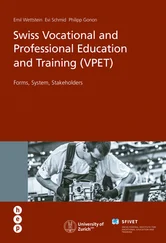The systems for general education are not solely to blame for the lack of practically qualified professionals in Indian industry. Vocational education and training systems that are oriented to the demands of the employment market and that can keep abreast with technical developments in industry are less common across the world. They usually also have low prestige among the population. This is a particular challenge, especially in India, owing to the social strata and the caste mentality that continues to prevail. Only the German speaking countries of Europe, in which the dual vocational education and training system[2] is deeply anchored, enjoy a long tradition in this regard, and thus have a certain prestige. Along with tradition, perceptions of value or history, there are other factors that could explain these countries’ deep involvement in vocational education and training. Studies in political science have shown that the typological differences in capitalist economic systems provide another explanation (see Finegold 1999; Hall & Soskice 2001; Thelen 2004, among others). Hence, the so-called coordinated market economies distinguish themselves because they have well-established social partnerships, manage salary negotiations at system level, and their companies cooperate with each other. In contrast, there is a lack of coordination among the organisations and the social partners in so-called liberal market economies. Competition is the key guiding factor and this occasionally has an effect on the attitude towards vocational education and training. Competition comes before cooperation. This makes it difficult to introduce vocational education and training at a system level in a comparable measure to that in German speaking countries. Without central institutions, such as the professional organisations (also called industry associations) in Switzerland, which regulate cooperation between companies, it would probably be difficult to develop an actual vocational education and training system that has strong support from industry. Business associations exist in India as well. However, they have not yet addressed operative educational topics systematically, until now, and they act only at the politico-strategic level.
To summarise, it can be ascertained that globalisation and internationalisation of the economy are leading to permanent complaints about the lack of highly qualified professionals in these countries as well. The multitude of international companies that, based on their own experience, are aware of the advantages of the vocational education and training system oriented towards the employment market are asking for measures to be implemented for the training of professionals. The low awareness level, the focus on dual vocational education and training in the German language region, as well as the influence of the colonial powers and their educational tradition in the emerging economies are also reasons why there are no role models for dual vocational education and training concepts in the developing economies.
From company-specific self-help initiatives to government commitment
The advantages of the Swiss vocational education and training system are brought to mind particularly by Swiss companies with production locations overseas when their growth is impeded by the lack of local practically trained professionals. As the accounts of Swiss companies in this book show, companies implemented different self-help initiatives in the past to raise the qualification standards of the local professionals in their own organisations, and in this way to remain competitive. This was possible especially for the larger companies. For small and medium-sized enterprises (SMEs), this is a problem because of the high costs. As more and more SMEs have been investing directly in India in the past years, professionals with similar skills to Swiss workers are also in demand in SMEs, and it is necessary to implement a systematic approach that allows even small companies to offer dual VET.
Numerous public vocational education and training programmes have been initiated in India to gear the country up to face the new challenges. The article by Ursula Renold and Vipul Agarwal summarises some of the important developments. A major obstacle in societies with an Anglo-Saxon school tradition is the lack of prestige associated with vocational education and training in particular, and more generally because there is a lack of commitment from the industries themselves. Vocational education and training is usually associated with blue collar work. It shows no promise for the future of the youth in the eyes of the majority of the population. In addition, there is no permeability between the individual educational programmes. As a result, it is difficult for both the government and industry to break this vicious circle by introducing appropriate measures.
Where vocational education and training schools exist, there are few opportunities to give them access to the latest state-of-the-art technology in line with the rapid transformation of the working world. Government authorities lack not just the know-how but usually also the financial options to equip the school infrastructure on an ongoing basis and to provide advanced training and qualifications for the teachers. The inertia of school-centric vocational education and training and the narrow financial margin diametrically oppose the rapid technological progress of emerging economies, which results in organisations’ increased dissatisfaction with local young professionals. However, even young professionals are affected by this, because entering the employment market becomes difficult for those without appropriate training opportunities. The Indian government strategy announced by Prime Minister Manmohan Singh in 2007 (National Skill Development Policy) to vocationally train over 500 million young Indians by 2022 is very welcome (Government of India 2009; Mehrotra, Gandhi & Sahoo 2013, p. 26). However, education requires time, and this is therefore a highly ambitious target, which will need much help if it is to be achieved.
Vocational education and training initiatives from across the world
Many governments around the world are trying to improve the condition of Indian education through cooperation and private export of services. These governments are often supported financially by the Indian government. In a country like India, in which over 30 million young people are supposed to complete any form of professional education each year, all initiatives are welcome (Mehrotra, Gandhi & Sahoo 2013). It remains to be seen which of these initiatives will be sustainable, and whether the government will be able to continue to provide greater funding.
Switzerland is one of these numerous foreign actors involved in the initiatives described in this book. Due to its strategic choices and financial options a country like Switzerland can occupy only a niche within the range of available models that exist globally. In addition, Switzerland wants to approach this niche with a solution that differs from those of other countries: The companies themselves – not public actors – must take the lead and make a commitment to their own young professionals in line with the motto: No employment market oriented vocational education and training without substantial commitment from industry.
Broadening the perspective: a systemic approach to vocational education and training
The idea behind the Swiss vocational education and training initiative is to involve private companies in a pilot project and implement a dual VET role model on site in a number of Swiss companies. This would be comparable to our dual VET and would integrate the current Indian vocational education institutions. This should first give rise to a role model, as described in Part III of this book, which would create acceptance in companies and among the public and take into consideration all factors relevant to the system. The objective is to improve the competitiveness of the companies, while simultaneously contributing towards alleviating the poverty of trained professionals and their families. This model differs from Switzerland’s current efforts to improve vocational education and training in India in that it creates a bridge between the institutions imparting professional education and a cluster of companies that provide training for the same occupation. Industries are encouraged to work together, because there must be agreement on what content should be taught in these professions and how the professional education institutions and companies should use their respective comparative advantages to capitalise on their strengths when providing training.
Читать дальше












